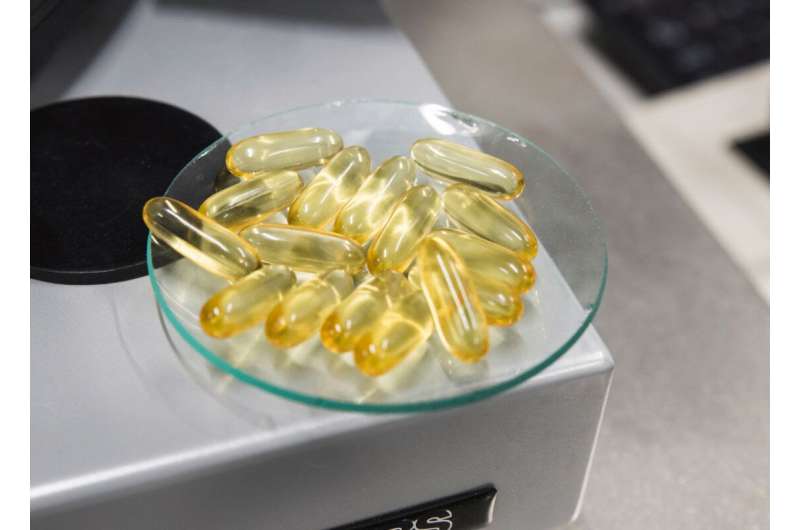Credit: Plant & Food Research
Fish oil capsules are a popular health supplement with many health benefits, but concerns have been raised over the quality because omega-3 fatty acids are very prone to oxidation and deterioration on exposure to heat and light. Plant & Food Research and University of Otago scientists have found a rapid way to analyze the concentrations of these fatty acids throughout the production process, including point-of-sale, to ensure that consumers are getting their money's worth.
Researchers have for the first time used a portable handheld device based on laser technology to analyze the concentrations of omega-3 fatty acids eicosapentaenoic acid (EPA) and docosahexaenoic acid (DHA) in intact fish oil capsules. The relatively low-cost Raman spectroscopy device can analyze the contents of soft gel capsules within seconds without destroying them. It overcomes issues that come with the standard chemical method.
They have tested the device on 15 commercial samples of New Zealand fish oil capsules and found that 14 out of 15 samples met the Australian and New Zealand regulatory requirements of containing at least 90% of the label claim for omega-3 fatty acids.
"The findings are significant because they show that the New Zealand fish oils we analyzed were of good quality," Plant & Food Research Marine Product Scientist Dr. Daniel Killeen says. "The omega-3 oil industry can potentially use the handheld device as a rapid and relatively low cost way to ensure the quality of their products throughout the production chain: before and after encapsulation, and after bottling and distribution to retailers."
The findings are in line with the results of a definitive 2017 study that analyzed properly handled fish oil samples at multiple accredited analytical laboratories.
More information: Daniel Patrick Killeen et al. First Use of Handheld Raman Spectroscopy to Analyze Omega-3 Fatty Acids in Intact Fish Oil Capsules, Applied Spectroscopy (2019). DOI: 10.1177/0003702819877415
Journal information: Applied Spectroscopy
Provided by University of Otago























